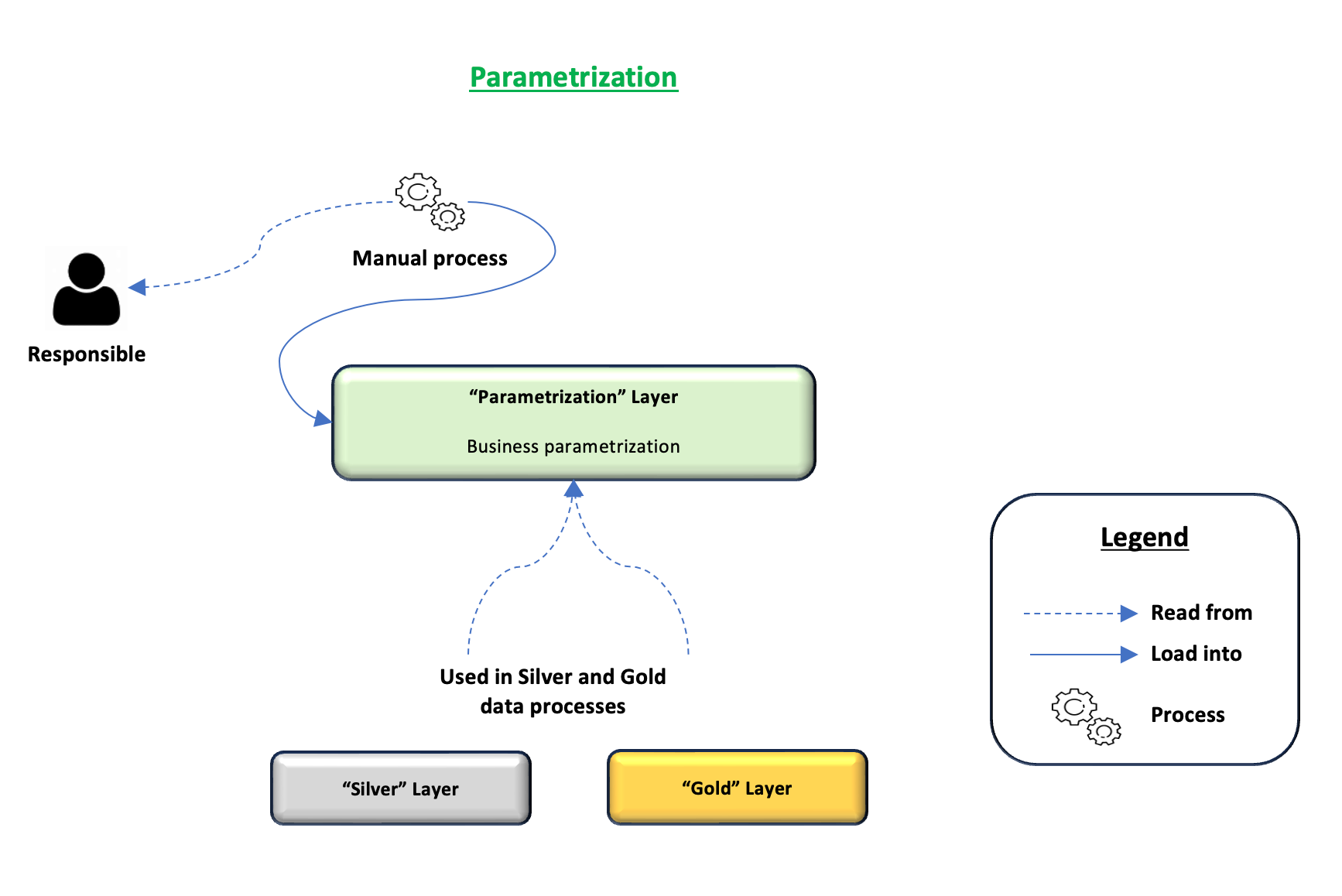The augmented medallion architecture - Parametrization layer
"Parametrization" layer
Published on : April 15, 2025
| Lastly edited on : April 15, 2025
| 5 minutes read

Lirav DUVSHANI
Series : The augmented medallion architecture
A standard architecture to analytics data platform
"Bronze" layer
"Silver" layer
"Gold" layer
"Platinum" layer
"Parametrization" layer
"Data Quality" layer
The Parametrization layer - The configuration in the hands of the business (and technical teams)

The main purpose of this layer is to have an independent layer dedicated to parametrization at the hands of business or technical users
Characteristics of the layer
- Configuration
- The configuration
- Versioning & Auditability
- This layer should maintain the full history of the data to enable auditability and root cause analysis.
- At the hands of business and technical owners
- This separate layer has a dedicated governance strategy and is managed by business and technical owners
- Allowed Data Structures
- Structured
- Granularity of data
- The data should be detailed at the level requiring the parametrization
- Useful metadata information
- The user responsible for the last modification on the record
- The last modification timestamp on the record
Good practices
The parametrization layer should be versioned, to keep track of all the changes, including the people who applied the changes. Using a SCM tool like Git can facilitate the tracking, as well as tracking deployment of parametrization changes across environments.
Examples
Example of a parameter table for referential transposition (for Silver layer)
Here is an example of a parameter table to transpose the source manufacturers provided into the standard manufacturer referential.
Parameter Table - Manufacturer Transposition
| Manufacturer Name (Original) | Manufacturer Name (Standard) |
|---|---|
| HP | HP |
| Hewlett-Packard | HP |
| Hewlett Packard | HP |
| HP Inc. | HP |
In this example, many different manufacturer names can be provided in the source for HP.
This table can be used in the Silver layer to clean any manufacturer name field.
Example of a parameter table with business logic (for Gold layer) - 1
Here is an example of a parameter table to indicate when data is available in the ERP per domain on all the subsidiaries and thus when data is pertinent.
Parameter Table - Subsidiaries
| Subsidiary Name | Sales Data Available in ERP since | Finance Data Available in ERP since |
|---|---|---|
| Holding | 2020-01-01 | 2020-01-01 |
| Tech | 2020-01-01 | 2020-01-01 |
| Manufacturing | 2020-01-01 | 2020-01-01 |
| External Company | 2023-01-01 | 2024-01-01 |
In this example, we can see that the External Company has been configured with sales data available since January 1st, 2023 but with finance data only available a year later on January 1st, 2024.
This table can be used in the Gold layer to prevent any load of finance data for the external company as it might not be relevant.
Example of a parameter table with business logic (for Gold layer) - 2
Here is an example of a parameter table to convert currencies.
Parameter Table - Currency conversion
| From Currency | To Currency | From Date | To Date | Conversion Rate |
|---|---|---|---|---|
| USD | EUR | 2025-01-01 | 2025-01-31 | 0,9708 |
| USD | EUR | 2025-02-01 | 2025-02-28 | 0,9637 |
| GBP | EUR | 2025-01-01 | 2025-01-31 | 1,18421 |
| GBP | EUR | 2025-02-01 | 2025-02-28 | 1,20772 |
This table can be used in the Gold layer to convert currency amounts.
This article is part of a series of article describing the augmented medallion architecture.
